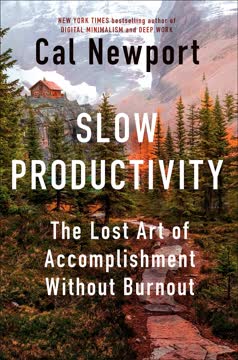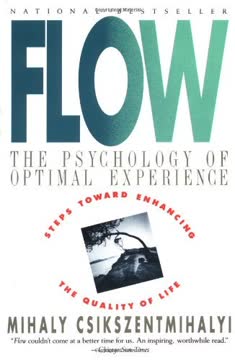Key Takeaways
1. Develop a "noticing mind-set" to see what others miss
First-class noticers are intensely attentive: they recognize talent and see opportunities that others miss.
Cultivate awareness. Successful leaders develop the ability to notice important information that others overlook. This involves being attentive to your environment, thinking critically about situations, and questioning assumptions. Practice looking beyond the obvious and considering multiple perspectives.
Look for patterns and anomalies. Train yourself to spot trends, inconsistencies, and deviations from the norm. Ask probing questions to uncover hidden information. For example, in the Challenger disaster, engineers failed to notice the correlation between low temperatures and O-ring failures. Developing a noticing mindset could have prevented this tragedy.
Take action on what you notice. Once you spot important information, don't ignore it. Follow up, investigate further, and take appropriate action. The ability to notice and then act on critical data is a key leadership skill that can help avoid crises and capitalize on opportunities.
2. Overcome cognitive biases that limit awareness
We view the world in a more positive light than is warranted. We see ourselves, our environment, and the future in optimistic terms.
Recognize common biases. Our minds are prone to systematic errors in judgment that can blind us to important information. Key biases include:
- Overconfidence bias: Overestimating our abilities and knowledge
- Confirmation bias: Seeking information that confirms existing beliefs
- Anchoring bias: Relying too heavily on one piece of information
- Availability bias: Overestimating the probability of events we can easily recall
Use debiasing techniques. To counteract these biases:
- Actively seek disconfirming evidence
- Consider alternative explanations and scenarios
- Use checklists and decision aids
- Seek diverse perspectives and encourage dissenting views
- Conduct pre-mortems to anticipate potential failures
Cultivate intellectual humility. Acknowledge the limits of your knowledge and judgment. Be open to changing your mind in light of new evidence. This mindset helps overcome the overconfidence that often blinds us to important information.
3. Recognize motivated blindness in yourself and others
Simply put, if you have an incentive to view someone positively, it will be difficult for you to accurately assess the ethicality of that person's behavior.
Understand motivated blindness. We often fail to notice unethical behavior when it's not in our interest to do so. This explains why people overlook wrongdoing by those they admire or depend on, like respected leaders or key clients.
Examine incentives. Look at how people and organizations are rewarded. What behaviors do these incentives encourage or discourage? For example, auditors have financial incentives to please their clients, which can compromise their independence.
Create accountability. Implement systems that counteract motivated blindness:
- Rotate personnel in key oversight roles
- Establish independent review boards
- Encourage and protect whistleblowers
- Separate oversight and profit-making functions
4. Think multiple steps ahead to anticipate outcomes
Game theory underscores the importance of thinking one (or more) steps ahead.
Anticipate others' decisions. In any strategic situation, consider how other parties will respond to your actions. This allows you to make better choices and avoid unintended consequences.
Use decision trees. Map out potential scenarios and their outcomes. This helps identify optimal strategies and potential pitfalls. For example, in negotiations, thinking ahead about the other party's alternatives can inform your approach.
Consider indirect effects. Look beyond immediate outcomes to second- and third-order effects. Policies or decisions that seem beneficial in the short term may have negative long-term consequences. For instance, rewarding salespeople solely on booked sales can incentivize bringing in customers who are unlikely to pay.
5. Pay attention to indirect actions and their consequences
When a company refuses to accept price increases to create a safer product, to educate consumers about product safety, and to pay extra to participate in making factories safe, it is a causal actor in creating harm.
Look beyond direct actions. Many harmful outcomes result from indirect actions or inaction. For example, a retailer demanding rock-bottom prices from suppliers can indirectly cause unsafe working conditions in factories.
Trace causal chains. When analyzing problems, look for root causes and contributing factors. Ask:
- Who benefits from the current situation?
- What incentives are at play?
- What alternative actions could have prevented this outcome?
Hold organizations accountable. Recognize that companies can be responsible for harms even when they occur indirectly. Advocate for policies and practices that consider the full impact of business decisions on stakeholders and society.
6. Question conventional wisdom and "too good to be true" scenarios
Anytime you hear about something that seems too good to be true, you should be skeptical.
Challenge assumptions. Don't accept "that's how it's always been done" as a valid reason. Question long-standing practices and beliefs in your industry or organization.
Analyze incentives. When faced with offers or opportunities that seem unusually favorable, examine the underlying incentives. For example, in penny auctions or Ponzi schemes, understanding the business model reveals why the deals are too good to be true.
Seek diverse perspectives. Engage with people from different backgrounds and disciplines. Their fresh viewpoints can help you spot flaws in conventional thinking. For instance, Billy Beane revolutionized baseball management by questioning traditional player valuation methods.
7. Create systems that encourage noticing important information
Leaders have a unique responsibility to create systems that will increase the likelihood that their staff will notice important information and respond in a productive manner.
Design for awareness. Structure your organization to promote noticing:
- Create cross-functional teams to share diverse perspectives
- Implement regular environmental scans and risk assessments
- Establish channels for reporting concerns and anomalies
Align incentives. Ensure that reward systems encourage noticing and acting on important information. Avoid metrics that inadvertently promote ignoring critical data.
Foster psychological safety. Create an environment where people feel safe raising concerns and challenging assumptions. Encourage constructive dissent and reward those who speak up about potential issues.
8. Use outsider perspectives to gain fresh insights
The main advantage I have in these situations is not my intellect or creativity but the fact that I am an outsider. As such, I am able to notice an idea that falls outside the assumptions of everyone else in the room.
Seek external input. Regularly bring in outsiders to review your practices and strategies. Their fresh eyes can spot issues and opportunities that insiders miss.
Practice perspective-taking. Try to view your organization or industry as an outsider would. What would someone new to the situation notice or question?
Rotate roles and responsibilities. Periodically move people between different functions or departments. This cross-pollination of ideas can lead to valuable insights and innovations.
9. Anticipate and prevent predictable surprises
A predictable surprise occurs when many key individuals are aware of a looming disaster and understand that the risk is getting worse over time and that conditions are likely to eventually explode into a crisis, yet they fail to act in time to prevent the foreseeable damage.
Identify potential crises. Regularly assess risks and vulnerabilities in your organization or industry. Look for issues that are likely to worsen over time if left unaddressed.
Prioritize threats. Use cost-benefit analysis to determine which potential crises deserve immediate attention. Consider both likelihood and potential impact.
Mobilize action. Once a serious threat is identified, take concrete steps to address it. Overcome organizational inertia and resistance to change. Build coalitions to support necessary reforms.
Learn from near misses. Treat close calls as opportunities to improve systems and processes. Conduct thorough after-action reviews to identify lessons learned and implement preventive measures.
Last updated:
FAQ
What's The Power of Noticing about?
- Focus on Noticing: The book emphasizes the importance of noticing critical information that often goes overlooked in decision-making processes. It argues that leaders and individuals can improve their effectiveness by developing a heightened awareness of their surroundings.
- Human Limitations: It discusses "bounded awareness," which refers to the systematic ways people fail to see or seek out important information. This limitation can lead to poor decisions and organizational crises.
- Real-World Examples: The author uses various case studies, including the Challenger disaster and the Enron scandal, to illustrate how failures to notice critical information can have dire consequences.
Why should I read The Power of Noticing?
- Enhance Decision-Making: Reading this book can help you improve your decision-making skills by teaching you how to notice what is often ignored. It provides practical strategies for expanding your awareness.
- Leadership Development: The book is particularly valuable for leaders who want to cultivate a culture of noticing within their organizations. It highlights the role of noticing as a critical leadership skill.
- Research-Based Insights: Max H. Bazerman draws on decades of research in behavioral decision-making, providing a solid foundation for the concepts discussed, making the book both informative and credible.
What are the key takeaways of The Power of Noticing?
- Importance of Asking Questions: One of the main takeaways is the necessity of asking, “What do I wish I knew?” This question encourages individuals to seek out additional information that may be critical to their decisions.
- Recognizing Motivated Blindness: The book explains how personal biases and motivations can lead to "motivated blindness," where individuals overlook unethical behavior or critical information.
- Developing Noticing Skills: Bazerman provides a blueprint for developing the capacity to notice, which includes training oneself to think ahead and consider indirect actions.
What is "bounded awareness" as defined in The Power of Noticing?
- Definition of Bounded Awareness: Bounded awareness refers to the systematic ways in which individuals fail to notice critical information that is readily available in their environment.
- Impact on Decision-Making: This concept explains why even intelligent and well-meaning individuals can overlook essential facts, leading to poor decisions and crises.
- Examples in Practice: The author illustrates bounded awareness through various case studies, such as the Challenger disaster, where critical information was ignored due to a narrow focus on specific data.
What is "motivated blindness" in the context of The Power of Noticing?
- Understanding Motivated Blindness: Motivated blindness is the phenomenon where individuals fail to notice unethical behavior or critical information because it is not in their best interest to do so.
- Real-World Implications: The book discusses how motivated blindness can lead to significant ethical lapses, as seen in the Penn State scandal and the Catholic Church abuse cases.
- Strategies to Combat It: Bazerman suggests that increasing awareness and creating a culture of accountability can help mitigate motivated blindness.
What is the concept of "predictable surprises" in The Power of Noticing?
- Definition: Predictable surprises are events that could have been anticipated based on available information but were overlooked by decision-makers.
- Examples: The book provides examples like the 2008 financial crisis and Hurricane Katrina, illustrating how leaders failed to act on clear warning signs.
- Preventive Measures: Bazerman emphasizes that by recognizing and prioritizing potential threats, leaders can mobilize resources to prevent predictable surprises.
What practical strategies does Bazerman suggest for improving noticing skills?
- Ask for Additional Information: Develop the habit of asking for more information when making decisions to uncover critical data that may not be immediately visible.
- Encourage Diverse Perspectives: Including diverse viewpoints in decision-making processes can help broaden awareness and reduce the risk of overlooking important information.
- Practice System 2 Thinking: Engage in slower, more analytical thinking to enhance noticing skills, contrasting with the faster, more intuitive System 1 thinking.
How does The Power of Noticing address cognitive biases?
- Cognitive Biases Explained: The book discusses various cognitive biases, such as motivated blindness and overconfidence, that can impair our ability to notice important information.
- Impact on Decision-Making: Bazerman explains how these biases can lead to significant errors in judgment, particularly in high-stakes situations.
- Strategies for Overcoming Biases: The author offers strategies for overcoming cognitive biases, such as seeking diverse perspectives and questioning assumptions.
What are the best quotes from The Power of Noticing and what do they mean?
- “What you see is not all there is”: This quote encapsulates the book's central theme, urging readers to recognize that their perception is limited and that critical information may be overlooked.
- “The dog did nothing in the night-time”: Referring to Sherlock Holmes's deduction, this quote highlights that sometimes the absence of action or information can be as telling as the presence of it.
- “We often fail to notice gradual changes”: This quote speaks to the slippery slope of ethical behavior and decision-making, reminding readers to remain vigilant and aware of subtle shifts.
How does Bazerman illustrate the importance of noticing in decision-making?
- Real-World Case Studies: The book is filled with real-world case studies that demonstrate the consequences of failing to notice critical information.
- Comparative Analysis: Bazerman compares successful leaders who notice effectively with those who fail to do so, highlighting the differences in outcomes.
- Psychological Insights: The author incorporates psychological insights into how people process information and make decisions, helping readers understand the underlying mechanisms that affect noticing.
What role does leadership play in fostering a culture of noticing?
- Setting the Tone: Leaders play a crucial role in establishing a culture that values noticing by modeling awareness and encouraging open communication.
- Accountability: Leaders must hold themselves and their teams accountable for noticing important information, driving better decision-making and preventing predictable surprises.
- Training and Development: Bazerman suggests that organizations should invest in training programs that enhance noticing skills among employees.
How can I apply the concepts from The Power of Noticing in my daily life?
- Practice Mindfulness: Incorporating mindfulness techniques can help you become more aware of your surroundings and the information available to you.
- Engage in Reflective Thinking: Take time to reflect on your decisions and the information you have considered, asking yourself what additional data you might need.
- Encourage Open Dialogue: Foster an environment where others feel comfortable sharing their insights and perspectives, creating a culture of noticing.
Review Summary
The Power of Noticing receives mixed reviews, with an average rating of 3.39/5. Readers appreciate its insights on improving decision-making and leadership skills, highlighting the importance of noticing hidden information. However, some find it repetitive and lacking practical advice. The book's strengths include interesting examples and concepts like motivated blindness and predictable surprises. Critics argue it could have been more concise and instructive, while supporters value its lessons on proactive information-seeking and avoiding common pitfalls in decision-making.
Similar Books










Download PDF
Download EPUB
.epub digital book format is ideal for reading ebooks on phones, tablets, and e-readers.








